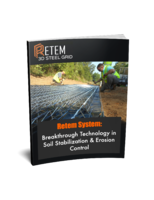Proposed ASTM Standard to focus on selection of assessors.
Press Release Summary:
Proposed new standard, ASTM WK30847, Guide for Selection of Assessors for Sensory Training, will help users determine appropriate assessors, give general guidelines for ways to select and recruit respondents, and list benefit and drawbacks in selecting certain assessors. Proposed standard will be divided into three major areas: selection of assessors for consumer and affective testing, descriptive testing, and difference testing.
Original Press Release:
Proposed ASTM Sensory Evaluation Standard to Focus on Selection of Assessors
W. CONSHOHOCKEN, Pa., -The proper selection of assessors can have a direct effect on the outcome of any sensory or consumer test. A proposed new ASTM International standard will help users determine appropriate assessors, give general guidelines for ways to select and recruit respondents, and list the benefits and drawbacks in selecting certain assessors.
The proposed new standard, ASTM WK30847, Guide for Selection of Assessors for Sensory Training, is being developed by Subcommittee E18.04 on Fundamentals of Sensory, part of ASTM International Committee E18 on Sensory Evaluation of Materials and Products.
"There are some questions in the field about several aspects of selecting assessors, and we are looking to address some of these and put them in one easy reference," says Lisa Beck, account executive, Q Research Solutions and a member of E18. "One example is when to use employee and nonemployee assessors and any special considerations in using one or the other. Another example is the type of testing being conducted and in what ways that impacts the selection of assessors."
Beck notes that ASTM WK30847 will be divided into three major areas: selection of assessors for consumer and affective testing, descriptive testing and difference testing.
"In our work, we have discovered that choosing the correct panelists may be the single most important part of the experimental design process for sensory research," says Doug Holt, senior manager, chemical and sensory science, Dr. Pepper Snapple Group, and an E18 member. "Get that wrong and the most elegant questionnaires and the most fabulous facilities will not save you from making inaccurate sensory decisions."
The proposed standard will contain a summary of information contained in other guides on selection assessors, but it will also touch on screening and recruiting methods and maintenance of assessor panels in addition to other practical considerations. All interested parties are invited to contribute to the development of ASTM WK30847, particularly anyone who has case studies that they can share.
ASTM International welcomes and encourages participation in the development of its standards. For more information on becoming an ASTM member, visit http://www.astm.org/JOIN.
ASTM International is one of the largest international standards development and delivery systems in the world. ASTM International meets the World Trade Organization (WTO) principles for the development of international standards: coherence, consensus, development dimension, effectiveness, impartiality, openness, relevance and transparency. ASTM standards are accepted and used in research and development, product testing, quality systems and commercial transactions.
View this release on the ASTM Web site at www.astmnewsroom.org.
ASTM Committee E18 Next Meeting: April 12-14, 2011, April Committee Week, Anaheim, Calif.
Technical Contact: Lisa Beck, Q Research Solutions Inc., Oak Bridge, N.J., Phone: 908-735-4850; isab@whoisq.com
ASTM Staff Contact: Scott Orthey, Phone: 610-832-9730; sorthey@astm.org
ASTM PR Contact: Barbara Schindler, Phone: 610-832-9603; bschindl@astm.org
www.astm.org



